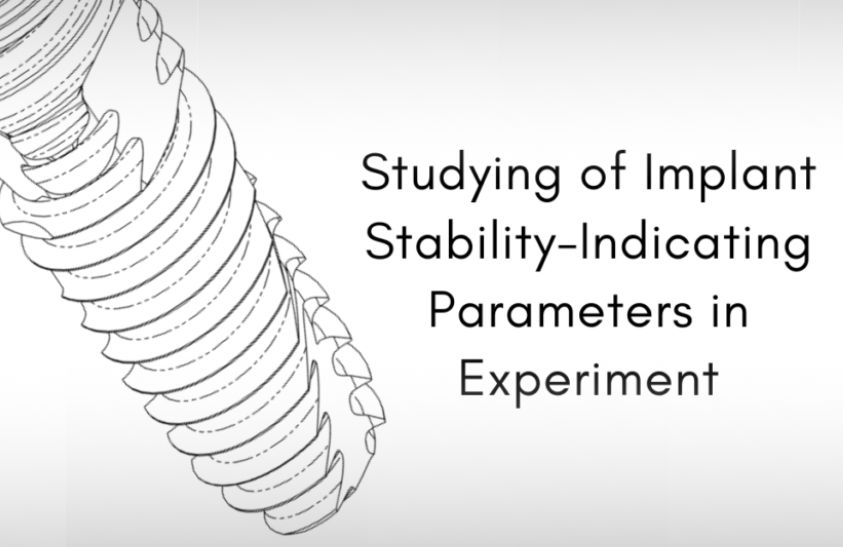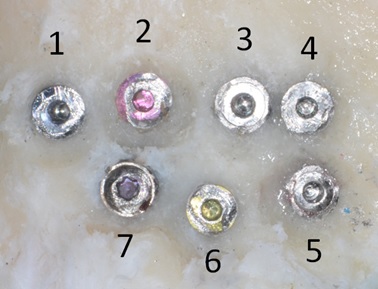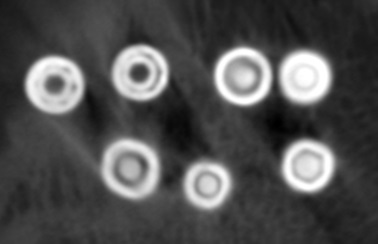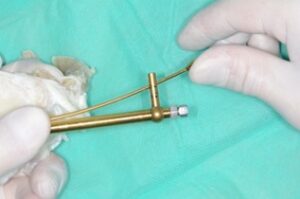
Ugrin M.M., associate professor of Dental Orthopedics Department
of LNMU named after D.Galytskyi
Shubenk T.Yu., Head of Department of Computerized Diagnostics
of Center of Dental Implantation and Prosthetics “MM”
Nowadays, dental implantation is the most efficient method of prosthetic rehabilitation of patients with full or partial edentulous (1). For many years, different researches aimed to find the ideal characteristics of implants have been performing. Especially, it has been caused by the introduction of such protocols as immediate implantation and immediate loading (2,3).
Implant stability and long-term functioning directly depend on effective osseointegration, i.e., maximal contact of the implant surface with bone tissue.
There are various methods of osseointegration effectiveness estimation both experimentally and within patient (4).
Purpose of this studying was determination of osseointegration effectiveness of implants of different manufacturers in experiment.
1. The experimental model was a ram.
2. Implants of different manufacturers.
3. Device for implant stability estimation OssTell ISQ.
4. CBCT tomography Morita 3D Accuitomo 170.
5. Torque wrench from implantology kit Nobel Active (load up to 70 N/cm).
1. Alpha Bio;
2. ICX;
3. Bio3 Implants;
4. Alpha Dent;
5. MIS;
6. Biohorizons;
7. Straumann.
The research was performed on the ram. Under general anesthesia, all the above-mentioned implants were placed in an area of FEMORAL BONE EPIPHYSIS according to the standard protocol of the first stage of two-stage implantation and then covered with cover screws. All implants were fixed with a loading of not less 35 N/cm. The animal care was performed in standard conditions of a vivarium.
3 MONTHS later, after animal sacrifice, the exarticulation of the bone fragment was made, the area where implants had been previously placed was localized, and cleared out of the soft tissue residues. The bone fragment was examined under a microscope and with an X-ray. After that, access to the implant cover screws was made using the ball-shaped dental cutter, and the cover screws were screwed out.

Macroscopic examination showed an appositional growth of bone tissue on cover screws of all implants. Visible pathological changes were not revealed. X-ray examination was performed using CBCT tomography Morita 3D Accuitomo 170. The image corresponded to images of osseointegrated implants, visible sights of pathology were not revealed.

In order to estimate implant stability in two planes using the device OssTell ISQ an appropriate element of special construction “SmartPeg” was installed into each implant. Work of the device OssTell ISQ is based on assessment of implant stability and bone tissue density by using vibration of certain frequency and principles of structural analysis (4).

Stability parameters obtained by using the device OssTell ISQ were almost similar for all implants.
| Implant | Measurement 1 | Measurement 2 |
| 1 | 89 | 89 |
| 2 | 88 | 88 |
| 3 | 85 | 85 |
| 4 | 85 | 87 |
| 5 | 85 | 84 |
| 6 | 88 | 88 |
| 7 | 89 | 88 |
Table.1
After that the implant removal test was performed. An experiment was made by using the torque wrench of dental system Nobel Active with loading up to 70 N/cm. None of the implants was removed.

The obtained data show high stability of the implants in the experiment, which indirectly evidences the successful osseointegration of all previously mentioned implants. However, these data are not enough to formulate the final conclusion.
Authors of the study do not have any objections to using the obtained data in further research.
1. Lang, N.P., Berglundh, T., Heitz-Mayfield, L.J., Pjetursson, B.E., Salvi, G.E. & Sanz, M. (2004) Consensus statements and recommended clinical procedures regarding implant survival and complications. International Journal of Oral & Maxillofacial Implants.
2. Esposito, M., Grusovin, M.G., Pellegrino, G., Saardi, E., Felice, P. (2012) Safety and Effectiveness of Maxillary Early Loaded Titanium Implants with a Novel Nanostructured Calcium-incorporated Surface (Xpeed): 1-year Results from a Pilot Multicenter Randomised Controlled Trial. European Journal of Oral Implantology.
3. Papaspyridakos, P., Chen, C.-J., Chuang, S.-K., Weber, H.-P. (2014) Implant Loading Protocols for Edentulous Patients with Fixed Prostheses: A Systematic Review and Meta-Analysis. The International Journal of Oral & Maxillofacial Implants.
4. Atsumi, M., Park, S.-H., Wang, H.-L. (2007). Methods used to assess implant stability: current status. International Journal of Oral & Maxillofacial Implants.